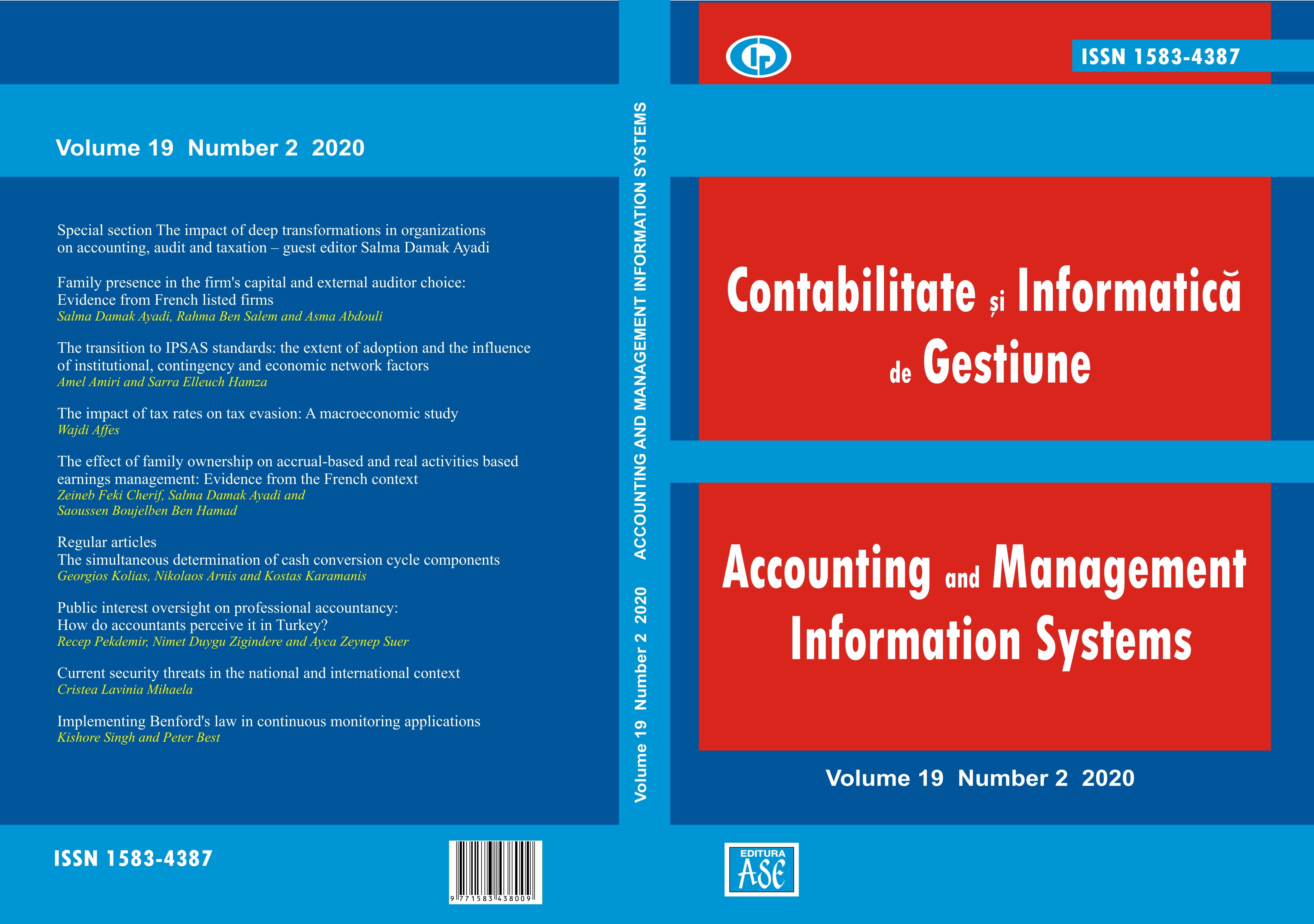The simultaneous determination of cash conversion cycle components
The simultaneous determination of cash conversion cycle components
Author(s): Georgios Kolias, Nikolaos Arnis, Kostas KaramanisSubject(s): Accounting - Business Administration
Published by: EDITURA ASE
Keywords: finance; cash conversion cycle; simultaneous equations model;
Summary/Abstract: Research Question: What are the interaction effects and links between the cash conversion cycle components? Motivation: One of the major difficulties in studying the links between the components of the cash conversion cycle is the fact that each of them is a determinant of the others. Idea: We develop a model to define the direction of the relations between cash conversion cycle components taking into consideration the contemporaneous correlation between them. Data: For the purposes of our study we use a balance panel dataset from Greek wholesale sector over the period 2005 - 2014. Tools: Error components three-stage least squares estimation for simultaneous equations of panel data is used. Findings: Our results show that inventory, accounts receivable and accounts payable are mutually endogenous factors and identify the causal relationships. We find that not only accounts payable lead to an increase in accounts receivable, but also accounts receivable leads to an increase in accounts payable. We argue that the causes for the effect of receivables on inventory differ from that of inventory on receivables. Contribution: The results of this study would be useful for wholesalers and supply chain managers to analyze and identify the interactions of inventory and trade credit policies. Moreover, our model can be used for the more accurate forecasting of inventory, accounts receivable and accounts payable.
Journal: Journal of Accounting and Management Information Systems
- Issue Year: 19/2020
- Issue No: 2
- Page Range: 311-332
- Page Count: 22
- Language: English

